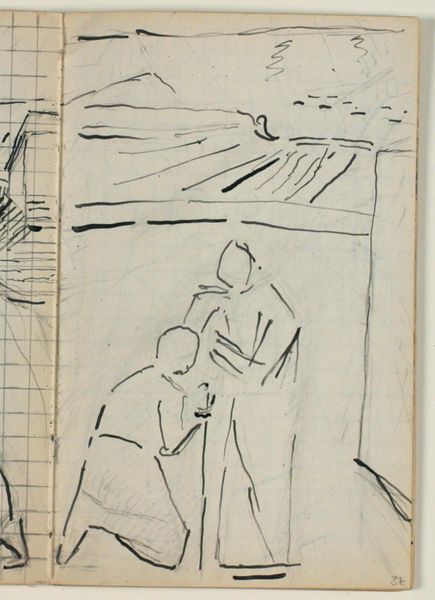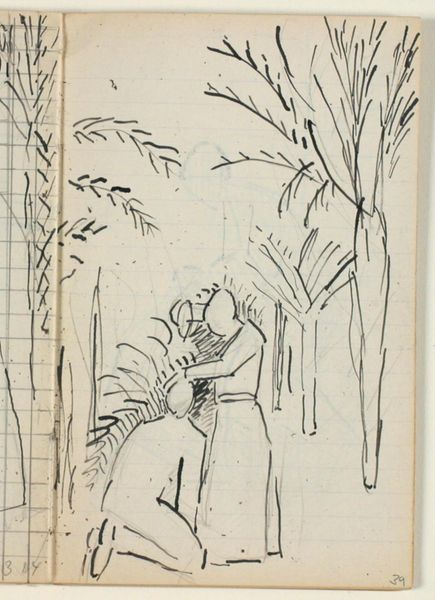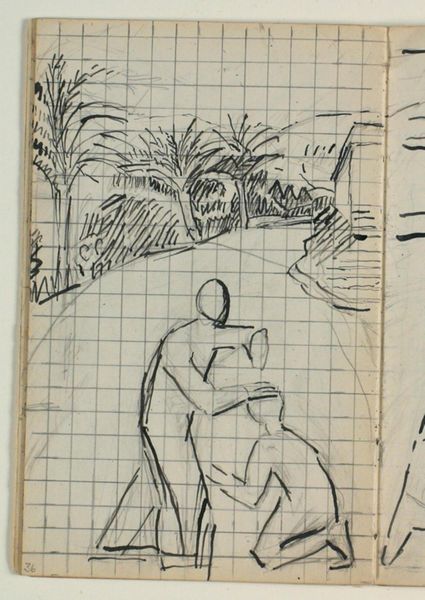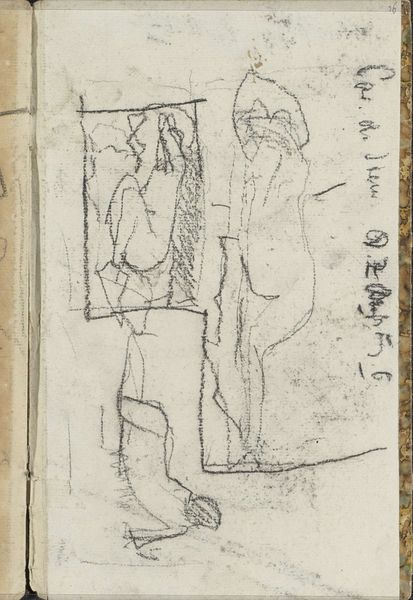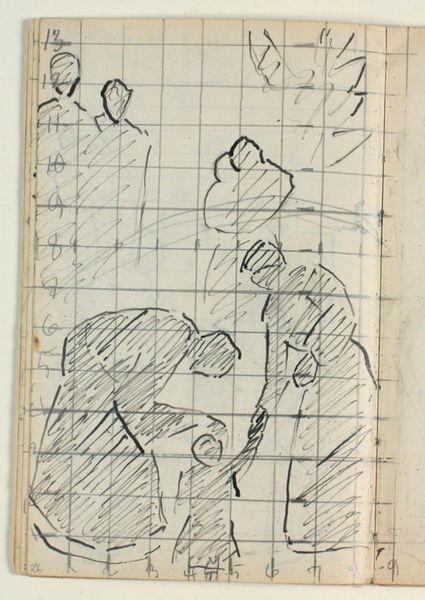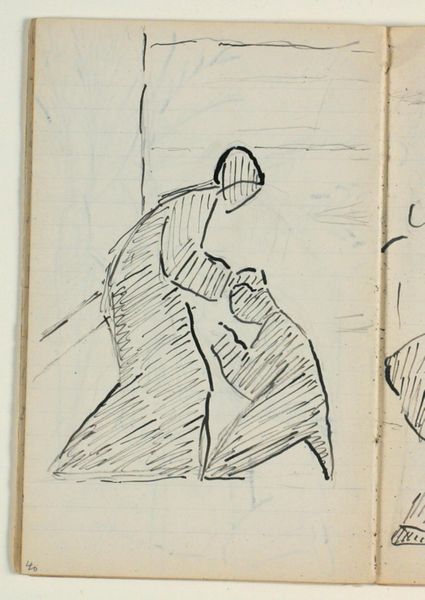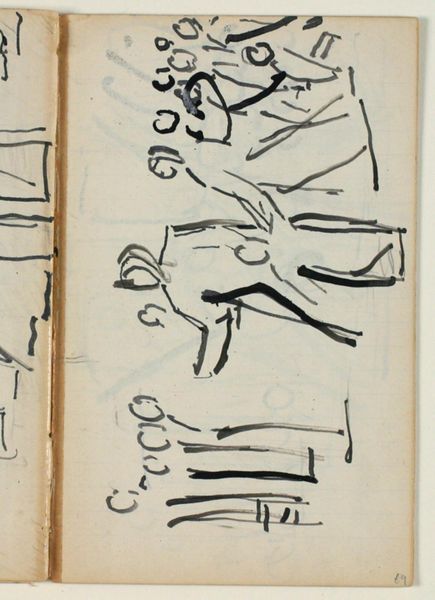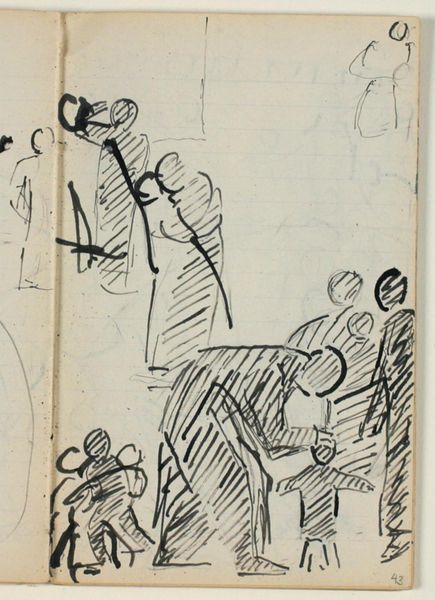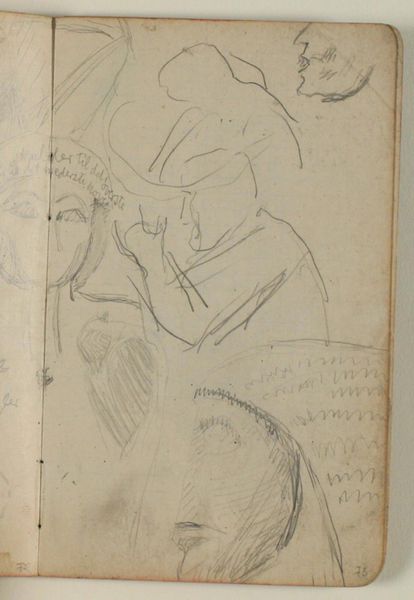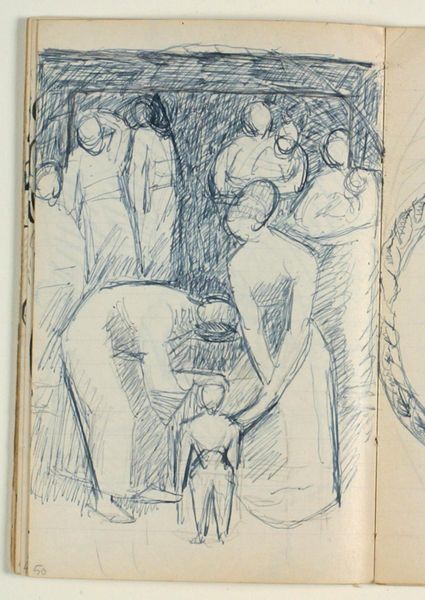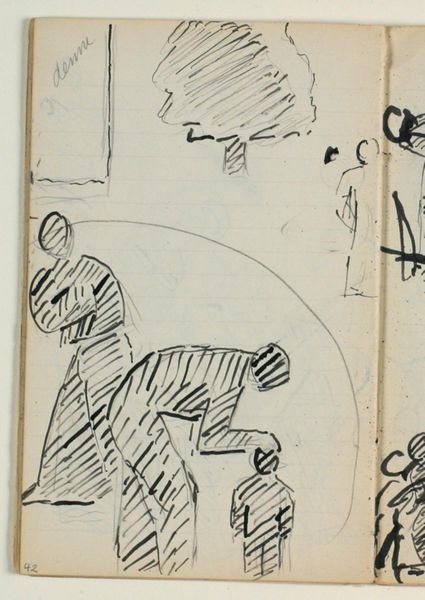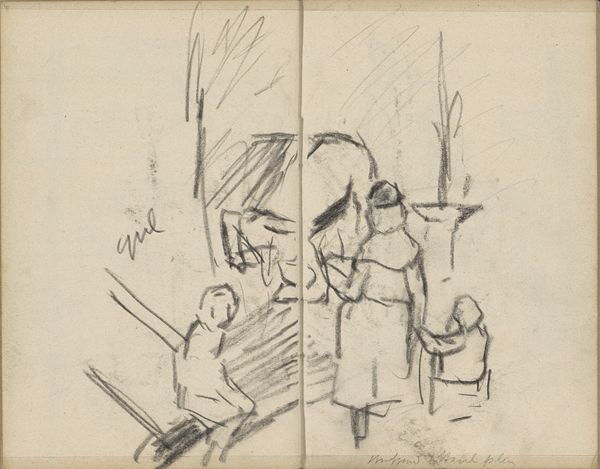
Udkast til "Kristus helbreder en spedalsk" 1937 - 1938
0:00
0:00
drawing, paper, ink
#
drawing
#
narrative-art
#
landscape
#
figuration
#
paper
#
ink
#
line
#
academic-art
Dimensions: 178 mm (height) x 111 mm (width) x 5 mm (depth) (monteringsmaal), 178 mm (height) x 111 mm (width) (bladmaal)
Editor: We’re looking at “Udkast til "Kristus helbreder en spedalsk"” which translates to “Draft for "Christ Healing a Leper,” a pen and ink drawing on paper by Niels Larsen Stevns, created between 1937 and 1938. It's a sketch on graph paper. It feels so preliminary, almost like we’re seeing the birth of an idea. What do you see in this piece, beyond just the obvious biblical reference? Curator: Beyond the religious narrative, which, of course, carries enormous weight in the social context of its time, I see Stevns grappling with the role of the artist in a changing world. Consider the deliberate use of graph paper. Why choose such a clinical, almost bureaucratic surface for such a traditionally spiritual subject? Editor: Maybe he's trying to bring order to something miraculous, rationalizing the divine? Curator: Perhaps. Or perhaps he's acknowledging the increasing rationalization of society itself. Art was being pushed to justify its existence, to demonstrate its social function. Is this drawing a testament to unwavering faith or a questioning of how faith is visualized and disseminated in an increasingly secular age? Also, consider the landscape, those almost violently rendered trees. Are they offering shelter, or do they convey something more turbulent? Editor: That's fascinating. I hadn’t considered the choice of the graph paper as a commentary in itself. I was focused on the simplicity of the lines. Curator: Stevns presents a figure, Christ, traditionally seen as a healer and rebel, but now presented on what is almost an architect's blueprint, it certainly changes the visual impact of this artwork. It forces us to question the social expectations of art during that period and challenges any straightforward interpretation. Editor: I'm leaving with a much broader view of this work. It’s not just a religious sketch; it’s a mirror reflecting the anxieties and debates of its time. Curator: Precisely. And a reminder that even preparatory sketches can be incredibly rich with meaning when we consider their historical context.
Comments
No comments
Be the first to comment and join the conversation on the ultimate creative platform.
